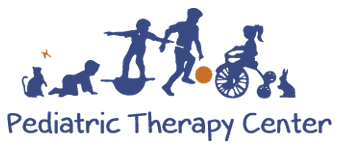NDT Intensives and Our Patients: NDT Series Part 5
NDT Intensives and Our Patients
For the last few weeks, we’ve been interviewing therapists who have recently been certified in NDT. But we thought for our last article about NDT we would interview one of our patient’s moms, and her therapist, about how NDT intensives have made a difference in her life.
Bryleigh is 10 and has PMM2-CD, which is a congenital disorder of glycosylation. This condition can impact several parts of the body but most cases have a neurological component. For Bryleigh, this means that her motor skills and balance are affected. She receives speech, occupational, and physical therapy at PTC twice a week. However, she is one of the main reasons (besides empirical evidence) that PTC is having Musketeer Camp.
Below is a lightly edited conversation I had with Bryleigh’s mom about how intensives have impacted Bryleigh.
Q: Since Bryleigh has started doing intensives, have you seen a marked difference?
We started doing intensives about 4 years ago and it’s always very, very clear that the three weeks of every day therapy is makes a huge difference. We have goals and measure her at beginning, and by the end there’s always a change.
Q: What does the improvement look like?
Her walking time improves and her strength. One of the things I didn’t expect to improve but really did was her speech. This doesn’t usually happen for kids with her diagnosis, so that was the biggest surprise because I wasn’t expecting that as much as I was improvement with PT and OT.
Q: You mentioned goals, what did you mean by that?
It depends on the year—when she first started she could only take 2 steps independently, so our goal would be ten, or things like that. So during those three weeks she would work with the therapist to help gain more independence by working on balance and walking skills.
Q: How did you decide to do NDT?
I actually came to Jane and Deirdre with the idea to do intensives. We used to do a different sort of intensive, but it worked mainly on increasing her strength and with Bryleigh’s diagnosis that’s not the issue, it’s balance. NDT intensives were actually recommended by a genetic doctor we went to see. Because this treatment is more neurologically based the improvements she makes stick more over time.
Q: So the gains Bryleigh makes don’t diminish over the year?
She doesn’t lose anything in the interim. The rest of the year it’s more of a maintaining thing. You don’t see the same drastic improvement, but you do get your bang for your buck with the three weeks. But it is hard work.
Q: What do you mean by hard?
It’s like working out for three hours! Do you want to work out for three hours? But Bryleigh sees the benefits, and we try to keep her motivated with a gift or trip at the end. But it’s worth it, and she puts her all in. I read a study back when she was newly diagnosed and it said intensives can get the same results as 3-4 months of therapy. She’s making less big jumps now that she’s older though, so I definitely recommend it for younger children, especially before they’re in school and navigating all of that.
Q: Any parting ideas or advice?
Don’t wait! That’s where to me as a mom who had never been exposed to anything like this, it took a couple of years for me to get my bearings. One, you’re in shock, and two you don’t know what you don’t know. That’s why I wish I had known about this earlier and that’s why sharing this is so important. If they make gains, and hold onto even 80% of that, it’s a win.
I also talked to Jane Knowlton, Bryleigh’s physical therapist and co-owner of PTC about how and why NDT is impactful.
Q: What kind of progress does she make, and how do you measure her progress?
Every time Bryleigh does the intensives she makes as much progress in three weeks as she does the rest of the year when she’s receiving therapy twice a week. We measure this progress using the Gross Motor Function Measure. The GMFM is a clinical tool to evaluate motor function and change in the function over time in a child with CP or other movement disorders (like Bryleigh). So, for example, in 2016 her change score over the year was 1.7, but after three weeks it was 1.8. In 2017 her progress was .4 over the course of the year, but after the intensive it was 1.2.
Q: Will this kind of therapy be effective for kids with a different diagnosis than Bryleigh? And can most people expect these kinds of jumps?
Actually, all of the studies they’ve done show that intensive therapies are “more effective in children with [cerebral palsy and similar movement disorders] than non-intensives one.” So we recommend this for any kid with movement disorders, whatever they may be. And while we can’t guarantee the exact number to every child, there will most certainly be a big difference between before and after the intensives.
We hope you’ve enjoyed our spotlight on NDT! For more information about the intensives, visit our website or call 713.772.1400 to talk to one of our therapists about how it can benefit your child.




